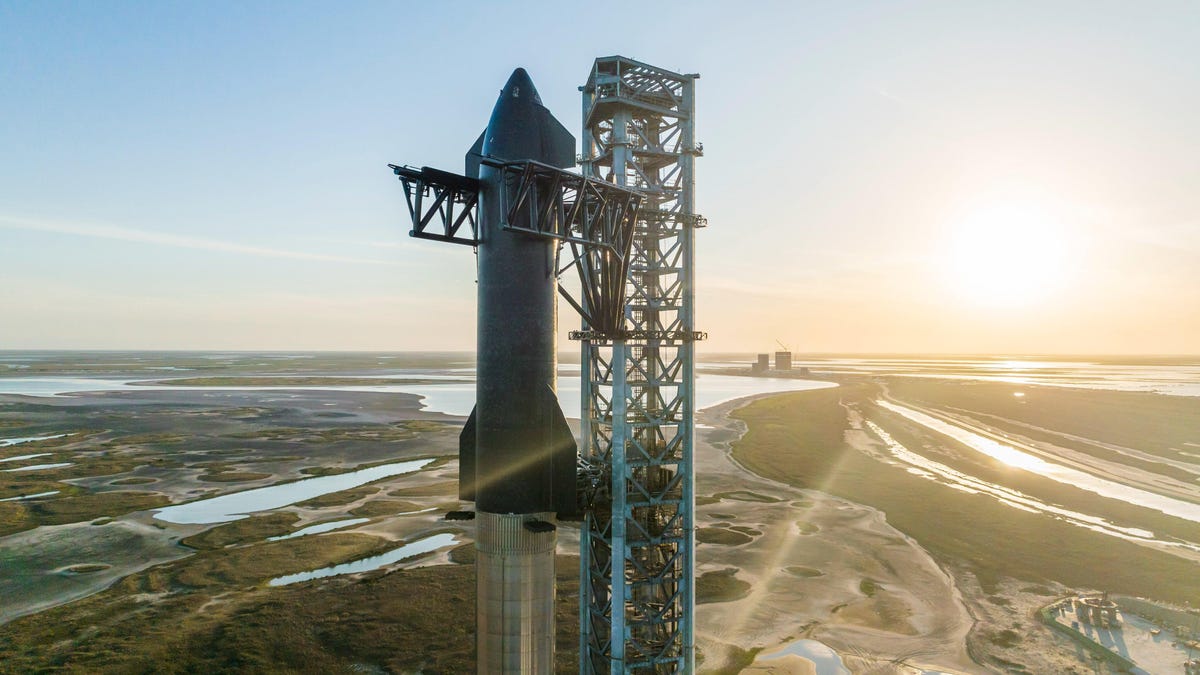SpaceX's Starship Signs Up a Big Passenger for a Future Mission
Before astronauts climb aboard Elon Musk's big spacecraft, some big payloads will get a boost to space in the coming years.

Starship at SpaceX's Starbase development center in Texas.
Elon Musk's big Mars rocket, dubbed Starship, is the designated vehicle of choice to take NASA astronauts back to the surface of the moon as part of the Artemis program later this decade, but SpaceX is also signing up customers for missions set to launch sooner.
Japan's Sky Perfect JSAT Group signed a contract with SpaceX to launch its Superbird-9 broadcast and broadband satellite on Starship in 2024.
"SKY Perfect JSAT and SpaceX will continue to work together ahead of the launch of Superbird-9 Satellite," the Tokyo-based satellite operator said in a statement that offered few other details about the deal.
SpaceX confirmed the agreement in a tweet Friday morning.
SKY Perfect JSAT has selected Starship for launch of its Superbird-9 communications satellite! https://t.co/sFZssT3omn pic.twitter.com/KDatzuWXaG
— SpaceX (@SpaceX) August 19, 2022
In addition to Musk's grand ambitions to use Starship to send humans to the moon and Mars in the coming years, SpaceX also hopes to shift more satellite launches to Starship, including those of its own Starlink broadband satellites.
For the past decade, the workhorse Falcon 9 rocket has been the go-to booster for SpaceX missions, but Starship is designed to handle significantly larger payloads.
Starship has yet to leave the atmosphere. Its first orbital test flight is expected to take place in the coming months once the Federal Aviation Administration grants a launch license. The demonstration mission will see Starship launch atop a Super Heavy booster for a short trip to orbit followed by a soft water landing off the coast of Hawaii.

